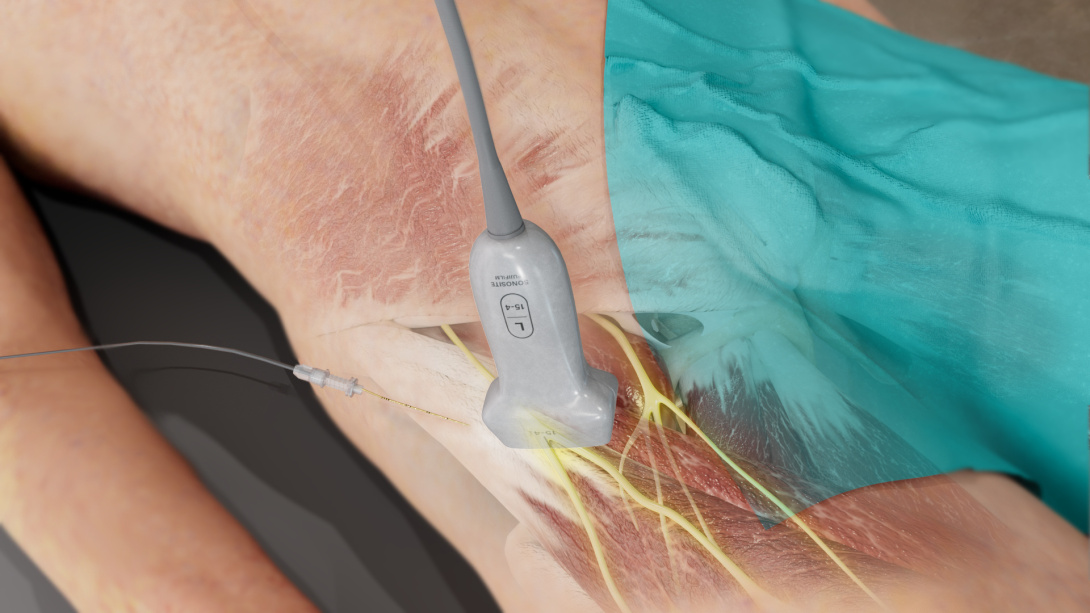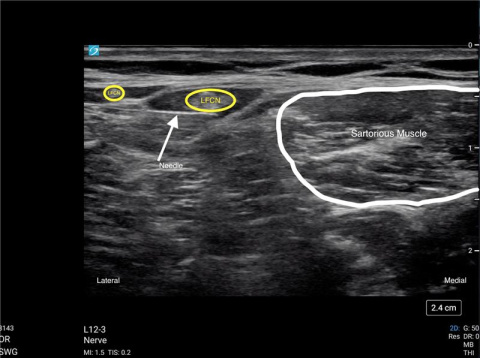Image

Objective:
Injection of local anesthetic surrounding the Lateral Femoral Cutaneous Nerve (LFCN) just lateral to the Sartorious Muscle. The Lateral Femoral Cutaneous Nerve Block provides analgesia to the anterolateral thigh and is often used for surgeries of the hip, such as total hip arthroplasty and ORIF of the Hip.
Technique:
- Begin by placing the ultrasound transducer transversely in the inguinal crease to identify the Common Femoral Artery.
- Scan lateral to identify the Sartorious Muscle. Follow the Sartorious Muscle to its lateral border.
- Identify the Lateral Femoral Cutaneous Nerve just lateral to the Sartorious Muscle. The LFCN is a hyperechoic structure located at an approximate depth of .5-.75cm.
- Use the in-plane needle technique with a lateral to medial approach to target the Lateral Femoral Cutaneous Nerve.
Image

Patient Positioning:
Supine
Transducer:
Teaching Points:
- The LFCN is a sensory only nerve.
- The transducer is oriented transversely over the femoral artery and moved lateral and slightly cranial to identify the nerve.
- The LFCN is often branched at this level. These branches may be blocked individually.
- The LFCN block is very effective in coverage for both anterior total hip and lateral total hip arthroplasty.
- The LFCN block is often combined with the PENG block for more complete analgesia of the hip.
- The LFCN is a sensory only nerve. Blocks performed on sensory only nerves are lower risk in that a nerve injury could result in prolonged numbness, possible pain, but no impairment of ambulation.
- The LFCN is a very superficial nerve. This makes it very easy to visualize, even in the morbidly obese. Because of this, the block needle should also be easily visualized.
- The LFCN and its branches are often located within fat pads lateral to the sartorious muscle.
Click to download the guide today.

